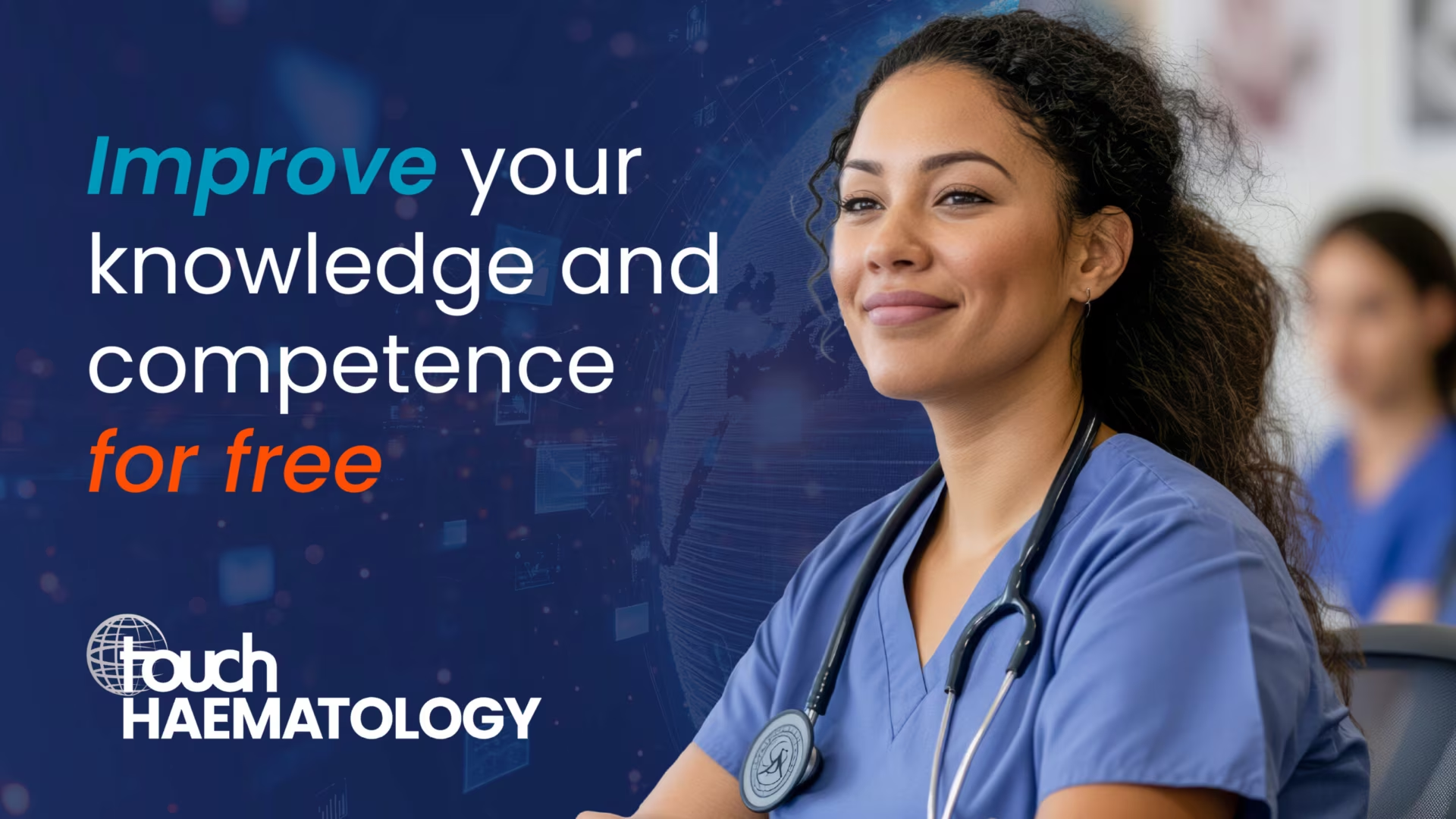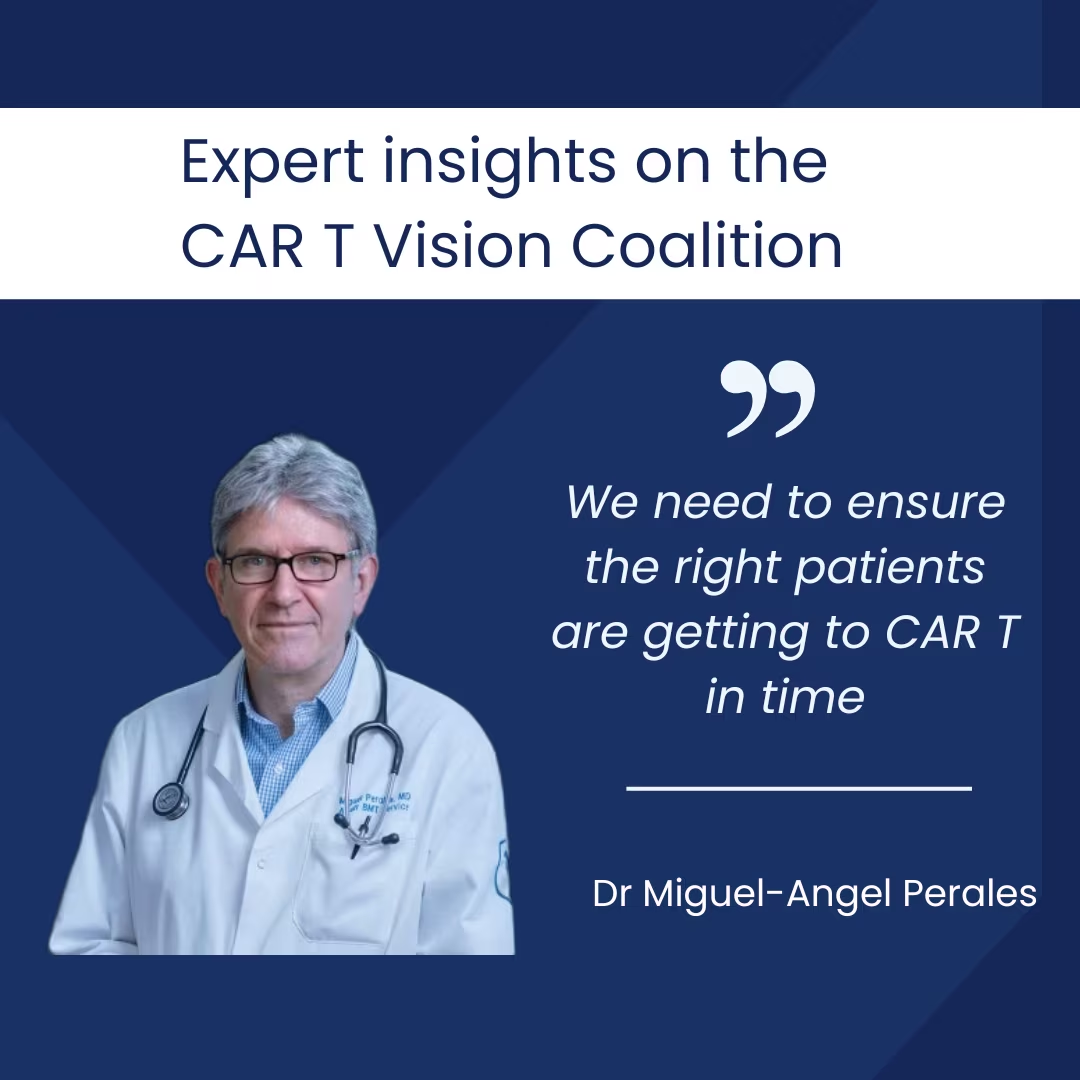“We need to ensure the right patients are getting to CAR T in time”
CAR T-cell therapies continue to transform outcomes for patients with advanced blood cancers, however just 2–3 in every 10 eligible patients are receiving the treatment. During the ASCO 2025 congress in Chicago, Dr Miguel-Angel Perales (Chief, Adult Bone Marrow Transplant Service at Memorial Sloan Kettering Cancer Center, New York, NY, USA), unveiled the CAR T Vision Coalition, which aims to double the number of patients receiving CAR T therapy by 2030. As expanding access beyond major academic centers is a pressing priority. Dr Perales highlights the importance of raising awareness among community physicians. Real-world data now reinforce what clinical trials have shown – that CAR T-cell therapy can offer significant benefits, even for older, more medically complex patients. By focusing on education and outreach, the goal is to ensure more patients are referred appropriately and in a timely manner to receive this potentially life-saving treatment.
Q1. Congratulations on the launch of the CAR T Vision and Roadmap report. Can you start by outlining the initiative’s rationale, aims and key collaborators?
Thank you. CAR T-cell therapies have been approved for nearly a decade, and we finally have a treatment that we’ve shown can cure patients, yet we’ve recognized in recent years that the vast majority of eligible patients still don’t receive them. It has made us realize that we need to act now and make a difference.
CAR T Vision is a global initiative that aims to bring together a wide range of stakeholders – professional societies, advocacy groups and, we hope, industry partners – with the shared goal of improving access to these life-saving treatments. We’re focused on three key areas: increasing awareness among patients and healthcare professionals, expanding treatment capacity and addressing financial and logistical barriers.
Q2. The report highlights that only 20% of eligible patients currently receive CAR T-cell therapy. What are the key drivers of this gap?
There are multiple barriers. First, awareness remains a significant issue. Many community physicians aren’t fully familiar with who qualifies for CAR T-cell therapy, or they may carry outdated assumptions – for example, that there’s a strict age cutoff. At our centre, we’ve treated patients well into their 80s, yet we still hear of clinicians assuming 60 years old is the upper limit. Patients may also be unaware that this option exists, so they never ask about it. Then there are logistical challenges. Current protocols typically require patients to stay near the treatment centre for around 4 weeks, with a caregiver. Not everyone has the support or flexibility for that.
And, of course, there’s the issue of reimbursement. Although things have improved, payers don’t always cover treatment promptly or fully. Geographic disparities add to the challenge – in some parts of the USA, for example, a patient might live 10 minutes from a centre, but in others, the nearest one is a 10-hour drive away.
Q3. The Roadmap report sets out a goal to double the number of patients treated by 2030. What steps will the Steering Committee take to achieve this?
Of course, as a physician treating these patients, I think we should be providing this to 100% of eligible patients, however we have to be realistic. In the USA, we’re treating approximately 20% of patents, in Europe, it might be 30%. We debated how ambitious to be, and ultimately agreed on a goal of doubling the number of patients receiving CAR T-cell therapy by 2030. This is still far from perfect, but a significant step forward.
We’re targeting three core areas. First, education: we need to equip community clinicians with up-to-date information, the latest clinical trial data supporting referrals for CAR T-cell therapy as well as the growing body of real-world evidence. We now have extensive data showing that outcomes in the real world are comparable to, and in some cases even better than, those seen in clinical trials. And importantly, we’re treating patients who are older and have more comorbidities than would typically be eligible for a trial.
Second, delivery capacity: we simply don’t have enough centres to meet current or future demand. As CAR T-cell therapy expands into earlier lines of treatment, this will only become more urgent. We need to move beyond the traditional academic model and build delivery capacity in community hospitals and larger oncology practices.
Finally, we’re looking at financing. CAR T-cell is expensive – it’s not a pill, it’s a personalized, cell-based treatment. We need innovative approaches to funding and reimbursement to make this sustainable and equitable.
Q4. Do you see a bigger role for community oncology centres in delivering CAR T-cell therapy?
Absolutely, we have to bring the treatment closer to the patients. Community oncology practices will have to take on a major role if we want to meaningfully expand access. There are two key roles they can play. The first is recognizing when a patient should be referred for CAR T-cell therapy – ideally early, before their disease becomes too advanced. Timely referral is critical. The second is, where feasible, delivering the therapy locally. Right now, the burden on academic centres is substantial, and it’s not scalable. Partnering with community hospitals to deliver care closer to home will be a game-changer – especially for patients who can’t afford to travel long distances or spend weeks away from home.
Q5. The report also emphasizes the need for equitable access across different geographies and populations. How do you see that being achieved?
Equity is one of the central challenges. We recently published a study in Blood Advances using national registry data that showed a clear trend: the farther patients live from a CAR T centre, the less likely they are to receive treatment. Geography alone can dictate access.
I remember one patient in particular – a man with relapsed lymphoma from western Pennsylvania. In a telemedicine consult, I explained that CAR T-cell therapy was likely his only chance at a cure, but he said he simply couldn’t ask his family to support a month-long stay in New York. I suggested Philadelphia, which was closer for him, but even that was out of reach. I never heard from him again, and I suspect he sadly passed away from his disease. That’s a tragic example, but it’s not uncommon.
One promising model comes from the University of Pennsylvania, where their CAR T team has partnered with a community hospital three hours away. They’ve trained local clinicians to administer the therapy under remote supervision. It’s a great example of decentralized delivery that maintains safety and quality.
Different regions will require different solutions, depending on geography, referral pathways and healthcare structures. In Europe, systems are more centralized but there are still geographic disparities. We need to think creatively and locally to ensure that every eligible patient – no matter where they live – has a real opportunity to access CAR T-cell therapy.
Disclosure: Dr Miguel-Angel Perales has received grant/research support from Allogene, Genmab, Incyte, Kite/Gilead, Miltenyi Biotec, Nektar Therapeutics and Novartis (Institutional research support for clinical trials). He has received honoraria/honorarium from Adicet, Allogene, Caribou Biosciences, Celgene, Bristol-Myers Squibb, Equilium, Exevir, ImmPACT Bio, Incyte, Kite/Gilead, Merck, Miltenyi Biotec, MorphoSys, Nektar Therapeutics, Novartis, Omeros, OrcaBio, Pierre Fabre, Sanofi, Syncopation, Takeda, VectivBio AG and Vor Biopharma. He serves on DSMBs for Cidara Therapeutics and Sellas Life Sciences. He has ownership interests in Omeros and OrcaBio.
This article was created with Inizio Evoke Communications. No funding was received in the publication of this article.
View full #ASCO25 coverage here!
Cite: #ASCO25: Dr Miguel-Angel Perales unveils the CAR T Vision Coalition. touchHAEMATOLOGY. June 15th, 2025
SIGN UP to touchHAEMATOLOGY!
Join our global community today for access to thousands of peer-reviewed articles, expert insights, and learn-on-the-go education across 150+ specialties, plus concise email updates and newsletters so you never miss out.



